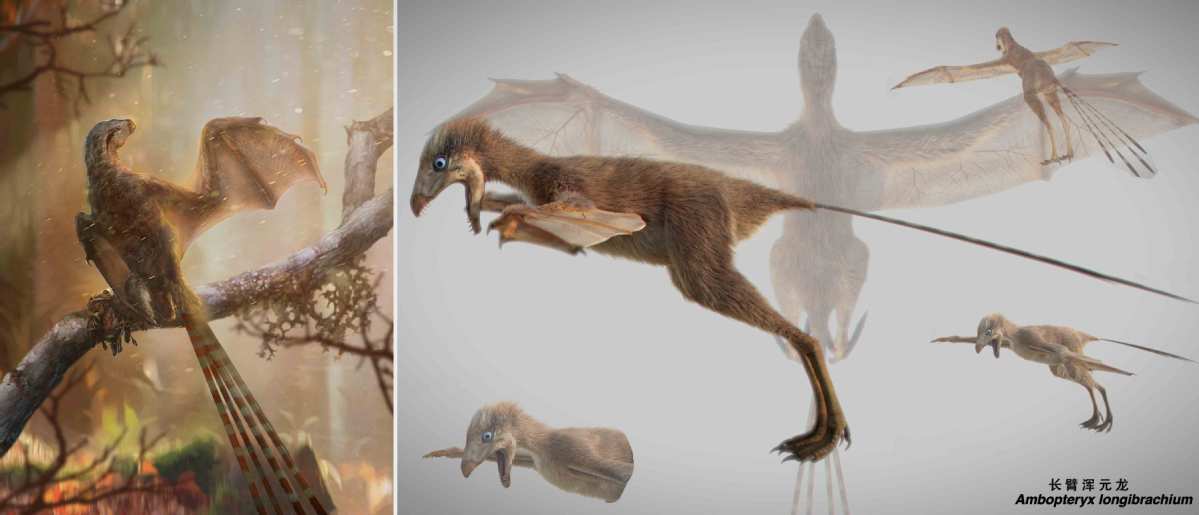New Jurassic dinosaur fossil found in NE China


Chinese scientists have discovered a new Jurassic nonavian theropod dinosaur from 163 million-year-old fossil deposits in northeastern China that provides new information regarding the incredible richness of evolutionary experimentation that characterized the origin of flight in the Dinosauria.
Published in Nature, Dr Wang Min of the Institute of Vertebrate Paleontology and Paleoanthropology of the Chinese Academy of Sciences in Beijing describes and analyzes the well-preserved skeleton of a new species of Jurassic scansoriopterygid dinosaur with associated feathers and membranous tissues.
The new species, named Ambopteryx longibrachium, belongs to the enigmatic clade the Scansoriopterygidae, one of the most bizarre groups of nonavian theropods.
The Scansoriopterygidae differ from other theropods in the proportions of their body plan, particularly in the proportions of the forelimb, which supports a bizarre wing structure first recognized in a close relative of Ambopteryx, Yi qi.
Unlike other flying dinosaurs, namely birds, these two species have membranous wings supported by a rodlike wrist bone (termed the styliform element) that is not found in any other dinosaur, but is present in pterosaurs and flying squirrels.
Until the discovery of Yi qi in 2015, such a flight apparatus was completely unknown among theropod dinosaurs – and its discovery in Yi qi was completely unexpected. Due to incomplete preservation in the holotype and only known specimen of Yi qi, the veracity of these structures and their exact function remained hotly debated.

As the most completely preserved scansoriopterygid specimen to date, Ambopteryx preserves membranous wings and the styliform element, supporting the widespread existence of these wing structures in the Scansoriopterygidae.
So far, all known scansoriopterygids are from the Late Jurassic – this unique membranous wing structure did not survive into the Cretaceous.
This suggests that this wing structure represents a short-lived and unsuccessful experimentation. In contrast, feathered wings, first documented in Late Jurassic nonavian theropods, were further refined through the evolution of numerous skeletal and soft tissue modifications, giving rise to at least two additional independent origins of dinosaur flight and ultimately leading to the current success of modern birds, the most diverse clade of land vertebrates on the planet.






























